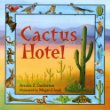-
-
c1991., H. Holt Call No: 574.5 GUI Edition: 1st ed. Availability:1 of 1 At Location(s) Summary Note: Describes the life cycle of the giant saguaro cactus, with an emphasis on its role as a home for other desert dwellers.
-
-
1994, Juvenile, Twenty-first Century Books Call No: 574.5 Sa Edition: 1st ed. Availability:1 of 1 At Location(s)
-
-
1994., Twenty-First Century Books Call No: 577.5 SAYRE Edition: 1st ed. Availability:1 of 1 At Location(s) Summary Note: Text and photographs discuss the climate, geology, plants, animals, ecology, and environmental problems of the desert.
-
-
2002., Primary, Heinemann Library Call No: ENF 591.754 Gal Availability:1 of 1 At Location(s) Series Title: Animals in their habitatsSummary Note: Describes deserts, the different kinds of animals that can be found in them, and their ecological importance.
-
-
2002., Pre-adolescent, Raintree Steck-Vaughn Call No: 591.754 Ste Availability:1 of 1 At Location(s) Series Title: Animals of the biomesSummary Note: Discusses the physical characteristics, behavior, and habitat of various animals that live in the desert biome. Some animals included are the roadrunner, scorpion, camel, and gila monster.
-
-
By Eboch, M. M[2020]., Pre-adolescent, Capstone Press, a Capstone imprint Availability:1 of 1 At Location(s) Summary Note: Discusses the geography and resources of the desert biome as well as how animals and people have adapted to and impacted desert environments.
-
-
By Warhol, Tom2007., Pre-adolescent, Benchmark Call No: 577.54 War Availability:1 of 1 At Location(s) Series Title: Earth's biomesSummary Note: Presents a comprehensive look at the desert biome, examining its climate, wildlife, people, and future.
-
-
By Warhol, Tomc2007, Juvenile, Marshall Cavendish Benchmark Call No: 577.54 Availability:1 of 1 At Location(s)Table of contents only Series Title: Earth's biomesSummary Note: Describes the various plants and animals that make up desert biomes, the different types of desert biomes and where they are located, and efforts to protect them.
-
-
2011., Juvenile, Farrar Straus Giroux Call No: 599.67 4096623 Edition: 1st ed. Availability:1 of 1 At Location(s) Summary Note: The last living desert elephants in Mali, West Africa, travel 300 miles each year to reach water. Humans help by keeping the animals' ancient pathways clear.
-
-
1994., Juvenile, Twenty-First Century Books Call No: 551.41 SAY Availability:1 of 1 At Location(s) Series Title: Exploring earth's biomesSummary Note: Text and photographs discuss the climate, geology, plants, animals, ecology, and environmental problems of the desert.
-
-
2009., Juvenile, Crabtree Pub. Co. Call No: 578.754 Availability:1 of 1 At Location(s)View cover image provided by Mackin Series Title: Extreme nature
-
-
2004., Juvenile, Crabtree Pub. Call No: 577.54 Availability:1 of 1 At Location(s) Series Title: The desert food chains seriesSummary Note: Presents an introduction to deserts ecosystems and food chains, and explains why all living things need food, describes a desert's plant and animal life, displays the energy pyramid, and looks at the cycle of how food is produced and consumed in desert environments.
-
-
c2011., Juvenile, Magic Wagon Call No: 577.54 16 Availability:1 of 1 At Location(s) Series Title: Fascinating food chainsSummary Note: Text and illustrations describe a desert food chain and provide facts about plants and animals in a desert ecosystem.
-
-
[2015], Primary, Heinemann Library Call No: 577.54 Availability:1 of 1 At Location(s) Series Title: Food chains and websSummary Note: "This book explores the food chains and webs that exist in a desert habitat. It equips readers with crucial vocabulary, using examples from that habitat to explain the roles of producers, consumers and decomposers, and illustrates how living things depend upon each other. Readers learn how fragile food chains can be, how they can be broken, and what we can do to prevent this"--Provided by publisher.
-
-
c2008., Juvenile, Lerner Publications Company Call No: 577.54 Availability:1 of 1 At Location(s) Series Title: Early bird food websSummary Note: Describes how the plants and animals of the Earth's deserts serve as food for each other.
-
-
2007., Juvenile, Gareth Stevens Pub. Call No: 577.54 Edition: North American ed., Availability:1 of 1 At Location(s)View cover image provided by Mackin Series Title: Exploring habitatsSummary Note: Discusses the characteristics of desert habitats and presents examples of many desert animals and plants, describing their relationships with their environment.
-
-
Juvenile Call No: 551.41 Availability:1 of 1 At Location(s) Summary Note: Explores the fascinating world of deserts. Readers will learn how deserts form and how they change over time, as well as the plants and animals that make deserts their home. Featuring vivid photographs, fun facts, focus questions, and resources for further research, this book is sure to support earth science education.
-
-
2006., Juvenile, Chelsea Call No: 574.5 BIO Availability:1 of 1 At Location(s) Series Title: Biomes of the EarthSummary Note: Describes the desert biome, including climate, geology, geography and biodiversity.
-
-
By Flegg, Jim1993., Facts on File Call No: 551.41 FLE Availability:1 of 1 At Location(s) Summary Note: Describes the desert ecosystem, including the plants, animals, and people of the world's arid regions.
-
-
2012., Juvenile, World Book, Inc. Call No: REF 591 WOR Availability:1 of 1 At Location(s) Series Title: Animals and their habitats.Summary Note: "A highly illustrated introduction to many of the animals that live in the world's desert and scrubland regions. Detailed captions describe each animal, while inset maps show where the animals can be found around the world. Features include a glossary, maps, photographs, and an index"





















